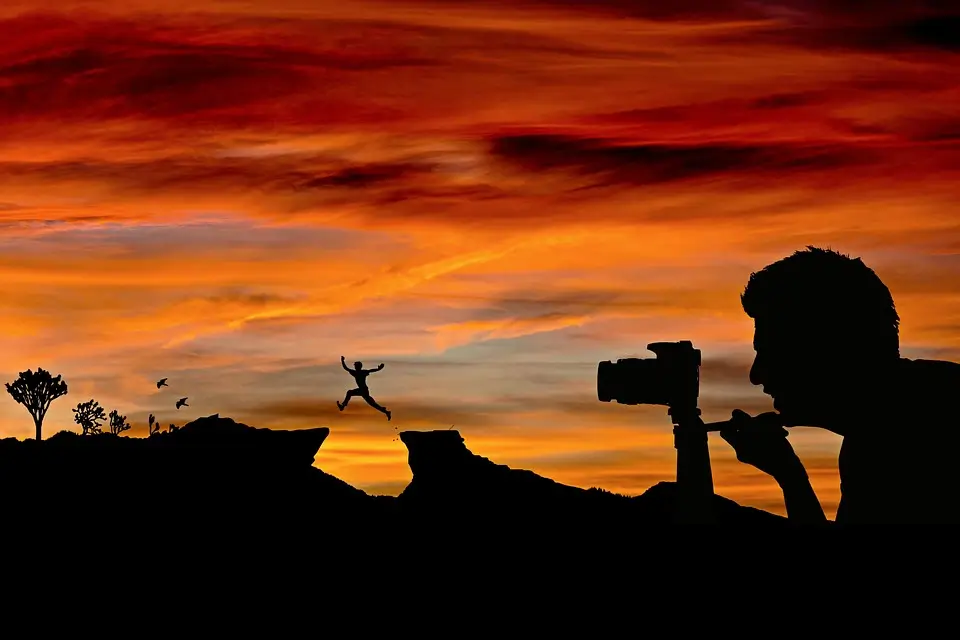Photography is an art form that allows us to capture the world in ways that words alone cannot express. While a high-quality camera body is essential, the lens plays an equally important role in determining the final image quality. Whether you’re a beginner or a seasoned professional, selecting the right camera lens can significantly enhance your photography experience. In this article, we will explore various types of camera lenses that can elevate your photography, from wide-angle lenses to prime lenses, helping you choose the best fit for your creative vision.
Wide-Angle Lenses: Perfect for Landscape Photography
Wide-angle lenses are a staple for landscape and architectural photographers. With a focal length typically ranging from 14mm to 35mm, these lenses offer a broad field of view, making them ideal for capturing expansive vistas, cityscapes, and interior shots. Wide-angle lenses allow you to fit more of the scene into the frame, making them perfect for situations where you want to showcase large environments or dramatic perspectives.
Benefits of Wide-Angle Lenses:
- Ideal for capturing vast landscapes, towering buildings, and sweeping views.
- Perfect for shooting in tight spaces or small rooms.
- Wide depth of field, meaning more of the scene is in focus.
When choosing a wide-angle lens, look for one with minimal distortion, as some lenses at the extreme wide end (e.g., 14mm) can cause barrel distortion, which may make straight lines appear curved. Many modern lenses come with features that correct distortion, providing sharper, more natural images.

Prime Lenses: Sharpness and Low-Light Performance
Prime lenses have a fixed focal length, meaning they don’t zoom in or out. These lenses are often praised for their image quality, sharpness, and low-light performance. Prime lenses, typically ranging from 24mm to 85mm, are excellent for portraits, street photography, and low-light situations where you need a fast lens to let in more light.
Benefits of Prime Lenses:
- Superior Image Quality: Prime lenses generally offer sharper, clearer images with less distortion and chromatic aberration compared to zoom lenses.
- Larger Aperture: With a wide aperture (such as f/1.4 or f/1.8), prime lenses perform exceptionally well in low-light environments, allowing you to shoot in dim settings without using a flash.
- Shallow Depth of Field: A large aperture also enables you to create a shallow depth of field, isolating your subject from the background and achieving a beautiful bokeh effect (background blur).
Prime lenses lack the flexibility of zooming in or out. However, their outstanding optical quality and ability to create sharp, beautiful images make them a favorite among portrait photographers. They are also ideal for anyone looking to capture high-quality shots.
Telephoto Lenses: Perfect for Wildlife and Sports Photography
Telephoto lenses have a long focal length, typically starting at 70mm and extending to 400mm or more. These lenses are designed for capturing distant subjects, making them ideal for wildlife, sports, and action photography. Telephoto lenses allow you to photograph subjects that are far away, bringing them into sharp focus while compressing the background.
Benefits of Telephoto Lenses:
- Zooming In on Distant Subjects: Perfect for capturing wildlife in their natural habitat or photographing athletes on the field from a distance.
- Compression Effect: Telephoto lenses create a compression effect, making objects appear closer together, which can add a unique artistic look to your photos.
- Background Blur: A longer focal length combined with a wide aperture can provide a pleasing background blur (bokeh) that isolates your subject.
Keep in mind that telephoto lenses can be heavier and bulkier than other types. This makes handheld shooting more difficult. Many telephoto lenses include image stabilization, which reduces camera shake and ensures sharper images, especially at slower shutter speeds.

Macro Lenses: Capturing the Smallest Details
Macro lenses are designed for capturing extreme close-ups of small subjects, like insects, flowers, or textures. They typically have a 1:1 magnification ratio, meaning the subject appears at actual size on the sensor.
Benefits of Macro Lenses:
- High Magnification: Macro lenses allow you to capture fine details that are invisible to the naked eye, revealing intricate textures, patterns, and small subjects.
- Exceptional Sharpness: These lenses are designed for extremely sharp close-up shots with minimal distortion and excellent depth of field control.
- Versatility: In addition to macro photography, these lenses can also be used for product photography or general close-up shots, giving you great flexibility in your creative work.
Macro lenses are particularly useful in nature photography, where capturing the tiny details of flowers, insects, and other small creatures is essential. However, they can also be used for artistic photography, creating abstract or highly detailed images that explore the world from a new perspective.
Zoom Lenses: Flexibility for Various Shooting Scenarios
Zoom lenses offer versatility by letting you change focal lengths. This eliminates the need to physically move closer or farther from your subject. They cover a range of focal lengths, such as 24-70mm, 18-200mm, or even 70-200mm. Zoom lenses are ideal for photographers who need flexibility and don’t want to carry multiple lenses.
Benefits of Zoom Lenses:
- Convenience: Zoom lenses allow you to shoot a wide range of subjects without needing to swap lenses. This is particularly useful for events, travel photography, or shooting sports.
- Flexibility: With a zoom lens, you can quickly change focal lengths to adapt to different shooting scenarios, whether you’re photographing landscapes or close-up portraits.
- Compact Setup: Rather than carrying several fixed focal length lenses, a single zoom lens can handle a variety of situations.
While zoom lenses offer convenience, they tend to have smaller apertures compared to prime lenses, which means they might not perform as well in low light. Some professional-grade zoom lenses feature a constant aperture (such as f/2.8), which ensures consistent light gathering across the zoom range.

Wide-Angle Zoom Lenses: Ideal for Landscape and Architecture
Wide-angle zoom lenses, such as 16-35mm or 18-55mm, offer flexibility for landscape and architectural photographers. They are perfect for capturing large scenes. These lenses are ideal for fitting a lot of the environment into your frame. Whether it’s a sweeping mountain range or a vast city skyline, they capture large scenes effectively.
Benefits of Wide-Angle Zoom Lenses:
- Versatility in Framing: You can zoom in or out to compose the shot exactly how you want, allowing for flexibility in framing your subject.
- Portability: Compared to using multiple fixed focal length lenses, a wide-angle zoom lens allows you to cover a broad range of compositions in one lens.
- Ideal for Travel: A wide-angle zoom lens is a great all-in-one solution for travel photographers who want to capture everything from close-up details to sweeping panoramas.
Wide-angle zoom lenses allow photographers to shoot expansive scenes without having to carry heavy, multiple prime lenses. However, they may not offer the same image quality as prime lenses, especially at the extreme ends of the zoom range.
Conclusion
Choosing the right camera lens can drastically enhance your photography experience and open up new creative possibilities. Whether you’re capturing landscapes, wildlife, portraits, or macro subjects, there’s a lens designed to meet your specific needs. While wide-angle lenses are great for landscapes, prime lenses excel in low-light conditions and portraiture, and telephoto lenses help capture distant subjects with sharp focus.
When purchasing a camera lens, consider factors like focal length, aperture size, and build quality. These elements will help you find the lens that suits your photographic style. Investing in quality lenses improves the sharpness and clarity of your images. It also provides flexibility and control, taking your photography to the next level. Whatever lens you choose, select one that complements your vision and allows you to express your creativity.